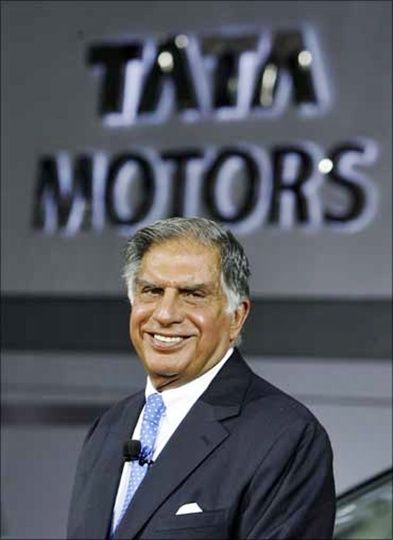
Many say Tata Motors has perhaps paid the price for being too ambitious.
At the annual shareholders' meeting of Tata Motors (then Tata Engineering and Locomotive Company, or Telco) in August 2001, Ratan Tata offered to resign from the company's chairmanship if shareholders so wished.
Though Tata's offer remained just that - merely an offer - quite a few shareholders and analysts criticised the management strategy of transforming Telco into a full-fledged passenger car maker.
The trigger for the collective angst was the company's results for 1999-2000, which were announced just three months prior to the shareholders' meeting.
Telco had reported its biggest yearly loss of Rs 500 crore (Rs 5 billion), partly due to the fact that it had invested nearly Rs 1,700 crore (Rs 17 billion), which was a quarter of its revenue in the mid-1990s, to develop an indigenous passenger car from scratch.
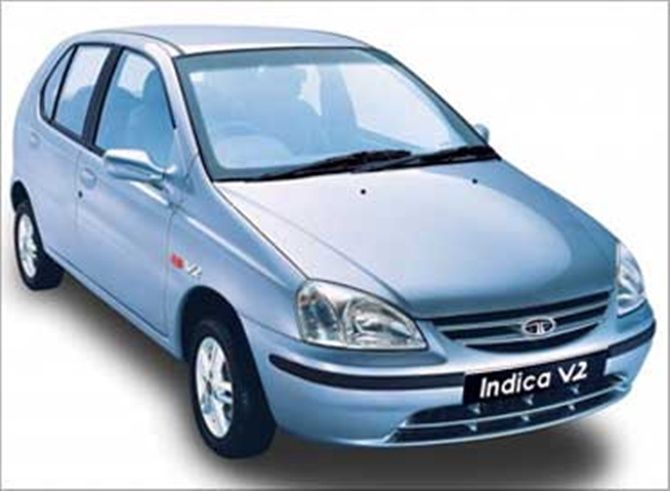 But the Indica, which was commercially launched in 1998, proved to be a cash guzzler. It was only after the launch of the V2 that the Indica tasted success and became India's second largest selling hatchback by the middle of 2004.
But the Indica, which was commercially launched in 1998, proved to be a cash guzzler. It was only after the launch of the V2 that the Indica tasted success and became India's second largest selling hatchback by the middle of 2004.
But the success proved to be short-lived as sales took a hard knock after competition closed in. Volumes began to lag from 2005-06.
The story is almost the same for other Tata models. Before the Indica, Telco had launched the Tata Sierra in 1991.
The model was a cross between a utility vehicle and a passenger car, but could not retain its appeal for long. Since then, the Tatas have launched over a dozen different models of cars and utility vehicles, but success has been elusive despite the initial excitement.
 When the Sumo hit the road in 1994, customers who were used to the vagaries of soft-top utility vehicles, saw it as a refreshing change and lapped it up.
When the Sumo hit the road in 1994, customers who were used to the vagaries of soft-top utility vehicles, saw it as a refreshing change and lapped it up.
Within two years, Telco came close to becoming the top utility maker, till its thunder was stolen by Toyota's Qualis and Mahindra's Bolero. Telco didn't upgrade the Sumo in time, allowing the competition to catch up.

Tata Safari, India's first indigenous sports utility vehicle, met a similar fate. When first launched in 1998, it was ahead of its time, but the product was not upgraded for over a decade, turning it into - as an analyst describes it - an old daddy in its segment.
The biggest setback for Tata Motors was, of course, failure of the Nano. Touted as the world's cheapest car and the centre piece of Tata's strategy to tap the opportunity at the 'bottom of the pyramid', the car failed to excite buyers after the initial hype.
Its positioning and brand narrative became too downmarket for India's middle class, for whom buying a car is a statement of financial and professional success.
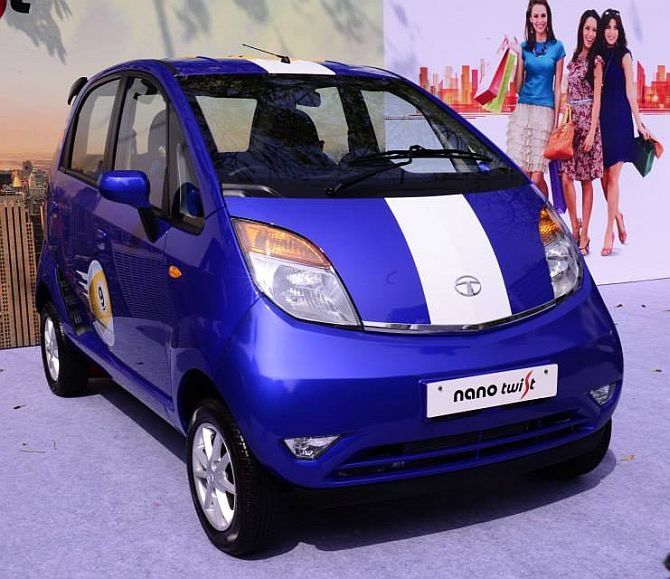 The net result of all this is evident. During the year ended March 2014, Tata Motors sold as many passenger cars in India as it did in 2003-04.
The net result of all this is evident. During the year ended March 2014, Tata Motors sold as many passenger cars in India as it did in 2003-04.
Many say Tata Motors has perhaps paid the price for being too ambitious. Just think of it - its portfolio includes the country's cheapest car (Nano) as well as the expensive sports utility vehicle (Aria).
Even Maruti Suzuki, which sells nearly 10 times more cars than Tata Motors, doesn't straddle so many segments. The story might have been different if Tata Motors had tried to win one segment at a time just like it built its commercial vehicle business.
Financial ups and downs
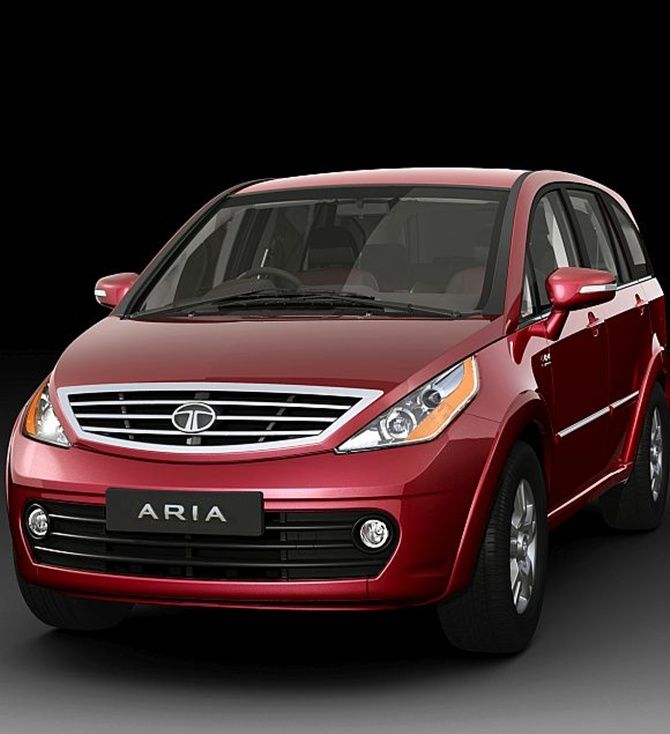 Tata Motors is no stranger to financial volatility. The company was set up at the dawn of India's independence to manufacture locomotives (for trains) and construction equipment.
Tata Motors is no stranger to financial volatility. The company was set up at the dawn of India's independence to manufacture locomotives (for trains) and construction equipment.
Within a few years, it diversified into commercial vehicles and became the market leader by the early 1970s with two out of every three trucks on Indian roads carrying a Tata badge.
While the success made Telco an automotive behemoth and the second most important company in Bombay House after Tata Steel (then Tisco), it was faced with a peculiar problem.
Commercial vehicles are a painfully cyclical business, and every boom is followed by a deep and painful downturn that could set the company and its shareholders back by years.
Being the market leader with a large installed capacity, a downturn was more painful to Telco's shareholders. This is clear from a cursory look at the company's financial ratios over the years.
The company offered stable and predictable returns on equity (RoE) to shareholders till the mid-1970s.
There was a spike in profitability in the next few years, but the good run was ruptured by the economic slowdown in the late 1980s. In the year ending March 1987, Telco's RoE declined to 1.4 per cent, a ratio previously seen in the early 1950s when the company was still in its infancy.
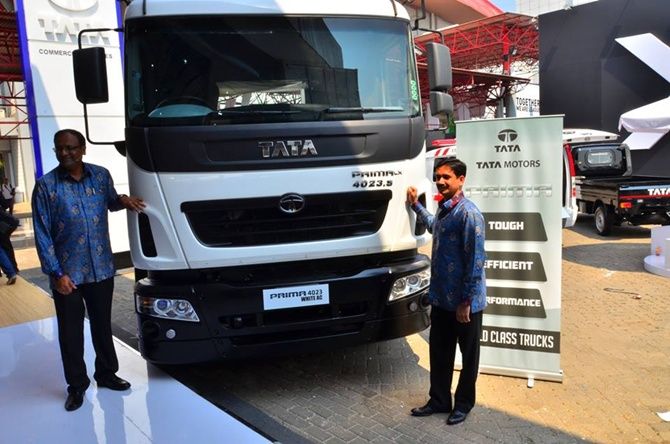 The cyclicality worsened as the Indian economy was progressively opened up to competition, including foreign capital, from the early 1980s.
The cyclicality worsened as the Indian economy was progressively opened up to competition, including foreign capital, from the early 1980s.
The die was cast when Ratan Tata took over as chairman in 1988: If Telco wanted to retain its financial heft and its numero uno position in the automotive sector, it had to de-risk itself from the commercial vehicle cycle and diversify into the more predictable and fast growing passenger car business.
"Since we already had 60 per cent share of the commercial vehicle business, how much farther can we go in that segment? We needed to have another segment. Having been in the television business (Nelco) and seeing that grow, I was quite convinced that the car business was going to be a big business, provided we were at the lower end," said Tata in a media interview about his strategy to push the company towards passenger cars.
In the interview, Tata also revealed that Sumant Moolgaonkar, the legendary former chairman of Telco, and J R D Tata, in fact, wanted to get into passenger cars much earlier.
It had signed up with Honda in 1986 to manufacture the Accord in India, but the government refused permission, forcing it to invest in product development in-house.
Thus began Telco's struggle to find a place in the domestic passenger car market without losing focus on its bread-and-butter commercial vehicle business.
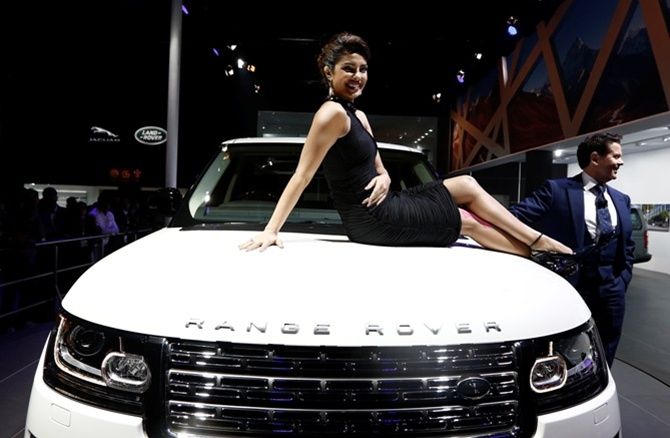
The journey has been rough indeed. But for the 2007 acquisition and turnaround of Jaguar Land Rover, Tata Motors would have been in deep trouble now.
JLR, which has emerged as the fastest growing and one of the most profitable luxury car makers in the world, now accounts for nearly 90 per cent of Tata Motors' consolidated revenues and all of its profits.
Meanwhile, the struggle in the domestic market continues. Will Zest, the latest Tata Motors showpiece, reverse the trend? One has to wait and see.
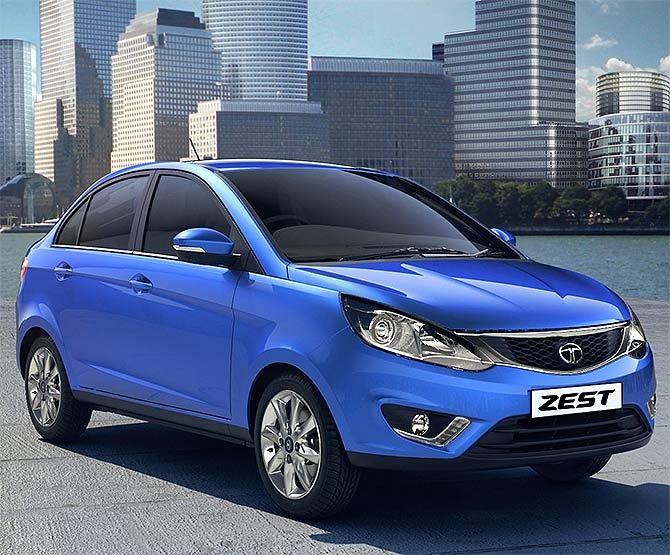 A JOURNEY ON FOUR WHEELS
A JOURNEY ON FOUR WHEELS
1988: Launched Tata Mobile, India's first pick-up truck
1991: Introduced Tata Sierra, a cross between an SUV and pick-up
1992: Introduced Tata Estate
1994: Tata Sumo hit showrooms, company's first utility vehicle built from scratch and powered by engine from its LCV range
1998: Indigenously developed passenger car Tata Indica showcased at Auto Expo
1998: Tata Safari, India's first sports utility vehicle hits showrooms
2001: Launched second-generation Indica: Indica V2
2002: Launched its first sedan Tata Indigo built on Indica platform
2005: Tata Safari upgraded with new common rail engine
2007: Tata Motors and FIAT establish a joint venture in India
2008: Unveiled Tata Nano at Auto Expo
2008: Acquired Jagaur land Rover from Ford Motor Co
2008: Launched new generation Tata Indica Vista
2009: Launchednew generation of Tata Indigo Manza
2010: Launched of Tata Aria, India's first crossover
2012: Launched next generation Tata Safari Storme
2014: Unveiled Tata Zest and Bolt at Auto Expo




.jpg)






